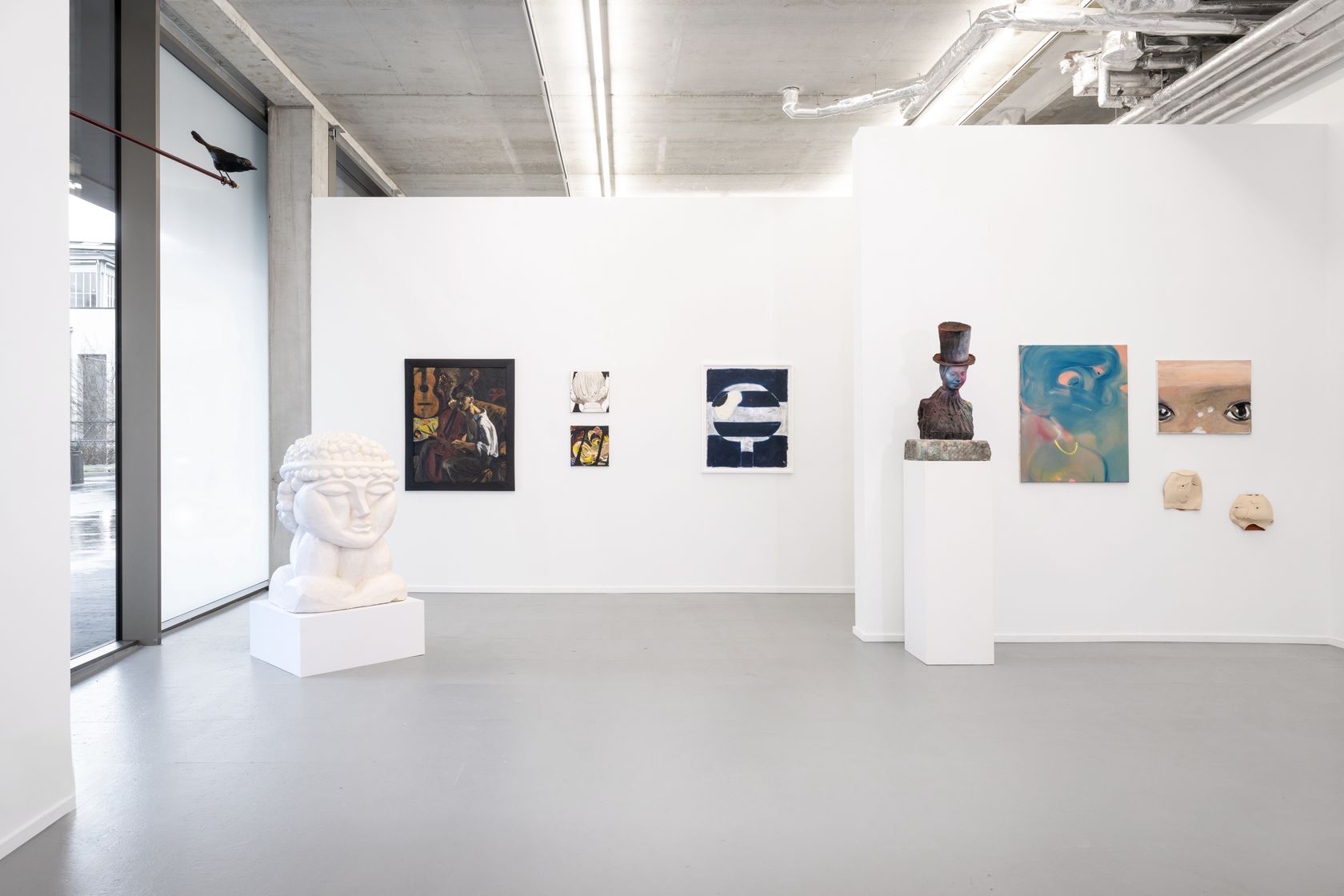A genre with such extensive history like portraiture, proves to be a generous, yet challenging subject matter for an ambitious and playful group show. FACE TIME presents a large-scale selection of artworks so diverse, that it makes us face age-old questions regarding portraits: What's the desired impression that an image like this is attempting to achieve? Is it to depict a person as life-like as possible, or to encapsulate their essence through a more complex visual language? What's the relation in-between the artist, the subject, and the audience? Since the function of portraits is constantly changing, there has been a myriad of answers always fit for a given time’s cultural zeitgeist.
As relevant as ever in the age of social media, on platforms like Zoom and Skype, almost everyone has experienced what it is like to be reduced to a framed little image, showcasing only one’s face as an alternative to their real-life presence. The differentiating line between the actual person and their portrait has been blurred centuries ago, expanding the potential use of these images. There are various examples of this phenomenon, from sacred icons with devotional purposes to obligatory household portraits of dictators reminding civilians to obey their regime et cetera… As Jean-Paul Sartre wrote in “The Psychology of Imagination”: Even if the object/subject is posited absent, the image has the ability to assure that its impression remains present. Sartre also concludes that when it comes to an image's representational function, resemblance plays quite a small role.
Throughout the course of history, artists have used the (pseudo)science of physiognomy2 to highlight the noble attributes of their subjects. Optimizing the features of the depicted person in order to make them seem more brave, competent, and intelligent means that their connection with reality has to be compromised. Within a strange dynamic, the desire to have control over one’s public identity slowly dissolves reality, deceiving both themselves and the spectators.
The heightened sense of collective self-awareness regarding physical appearance and its direct benefits or consequences is definitely not long gone among modern societies. Retouched, airbrushed, and filtered portraits and self-portraits are so common and normalized that the general public has become completely desensitized to their misleading nature. Algorithms dictate what it takes to be universally appealing, just like the idealized portraits of previous centuries, making it clear what people should strive for. With the pressure of having to keep up with these made-up ideals, the perception of our own body changes, and the differentiating features of our own looks become distressing. The end result is the homogenization of our heavily curated online and real-life presence, a visual landscape with almost identical faces.
As disheartening as it is, the very apparent disconnect between depiction and depicted, also comes with creative freedom within the genre. It allows artists to broaden the spectrum of portraiture’s visual language, by playing with abstraction and re-definition. Thanks to this liberty, the emphasis transfers from form to the connection between artist-subject-observer. After all, a portrait can act as an endless mirror providing a reassuring reflection of every participant’s separate identity and/or shared connection.
Within our extensive selection of works for FACE TIME, we intentionally highlight the diverse nature of beauty. Through various artistic mediums—drawing, painting, and sculpting—we showcase a plethora of subjects, each uniquely portrayed. This collection aims to draw attention to the rich tapestry of human appearances, challenging traditional norms and celebrating the multitude of ways in which ideas can be expressed and appreciated, starting a dynamic dialogue between subject and observer, self and other, encapsulated in the profound mantra, "You see me? I see you in me, I see me in you."
Hanna Júlia Erdősi, 2023
Partcipating artists: Manor Grunewald, Roy Mordechay, Kasper De Vos, Gongmo Zhou, Xavier Noiret-Thomé, Viktor Mattsson, Carlotta Bailly-Borg, William Ludwig Lutgens, Jean Brusselmans, Nel Aerts, Ritsart Gobyn, Aneta Kajzer, Lucia Sotnikova, Sven ’t Jolle, Sarah De Vos, Keith Haring, Laust Højgaard, Antoine Goossens, Daan Gielis, Carole Vanderlinden, Henri Matisse, Beni Bischof, József Csató, Bruce Nauman, Sergio De Beukelaer, Tatjana Gerhard, Lysandre Begijn, Florian Tomballe, Judit Kristensen, Henri Van straten, Adriaan Marin, Frederick Heyman, Emma Verhulst, John Stezaker, Nicholas William Johnson, Jesse Van Dun, Karin Hanssen, Folkert de Jong,...
